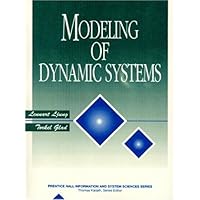
Average Reviews:

(More customer reviews)I purchased this book several years past. This Amazon.com reviewer is an avid ship modeler. I use this book nearly constantly. I give this book five stars.
Now, this book was written in 1993. So, there are no web sites for reference nor is there a more recent write up. If a person is interested in making a scratch built ship they should surf onto the steelnavy.com web site. Steel Navy is known as one of the best web references for ship building. Museum quality ships from the world have pictures on that page. If you want American warship plans then surf to "Maryland Silver". They have nearly all of the ship plans of the modern Navy. Furthermore, they have plans for most of the pre-1880 (modern Navy) ships. Last, a fair source of ship plans is Ebay. One vendor on Ebay sells quite warships and Great Lakes vessels. If you are making a modern ship and need fittings the web sites to check out are H&R Products, Blue Jacket Ship Models, and The Scale Shipyard. All three web locations have lots of fittings for ships.
Now, back to this book.
This book covers all necessary steps for a ship modeler. The first chapter is on getting correct plans. If your plans are off then what is the point? The second chapter covers making the keel, ribs (frames), and then planking the ship. The rest of the chapters follow in logical progression. The chapters vary from rigging your model if you have a sailing ship to building a superstructure for a modern ship. Note, there are two complete sets of plans in the back of the book. One for a sailing ship and another for a simple cargo steamer. I didn't build either because this modeler makes battleships.
Speaking of battleships, the book gives quite a bit of information on constructing a South Carolina class battleship. The South Carolina class is semi-famous in model circles. The first ship of the class, BB-27, the USS Michigan, has extensive model construction articles written about it in this book. Now, the chapter on Cage Mast Construction is about the only major book that has been published that covers this topic. Cage Masts were found on every battleship made in the USA from about 1910 to 1920. Cage Masts are seen on many of the battleships, like the USS Tennessee, at Pearl Harbor. So, it's very good that a major book tells how to make a cage mast. Note, the chapter on Cage Mast construction will advise a builder to make a jig for the mast. Furthermore, it's advisable that no cage mast be made that is smaller than 1/144th scale.
The book also gives advise on the cutting of wood, plastics, and metal. Furthermore, there is suggestions by the author on what type of wood cutting machines to buy, such as a table saw, and what sort of finishing tool to purchase. The hobby of ship modelling is a lot easier if you have a Demel tool.
The book had lots of little helpful items. It give basic instructions for making a deadeye. Port holes, very necessary for a making a convincing ship, are covered in this book. If you don't want to follow the advise you can get fair portholes from either H & R Products or Blue Jacket.
The only thing that isn't really covered in this book is making a boat radio controlled. You'll have to get another book if you wish to RC your beloved museum quality ship.
I hope you enjoy this book as much as I have. This book should be studies by any body who wishes to make their first scratch built model. Note, there are no large scale commercial models of Great Lakes steamers or Pre-WWII battleships. So, if you want to build a nice model battleship of the USS Florida you'll have to get the plans from Maryland Silver, the fitting from H & R Products, and read this book to learn the knowledge necessary for making that model.
Best wishes, fellow ship builder, on reading this book. You'll enjoy your purchase. I look forward to hearing about your question on steelnavy.com .
This book is worth all five stars.
Click Here to see more reviews about:
Ship Modeling from Scratch: Tips and Techniques for Building Without KitsBuilding a model from a kit is an excellent way to develop your modeling skills. But once you've mastered the basics, where do you go? If you're looking for a challenge, you move on to scratchbuilding. And that can be imposing: With a kit, you worked with someone else's plans, materials, and building instructions. Scratchbuilding makes you master of your own fate. You do the research, choose the subject, the scale, the material. The choices are limited only by your enthusiasm.
Edwin B. Leaf scratchbuilt his first model--a Baltimore clipper--nearly fifty years ago, and he's been refining and building on his skills ever since. In Ship Modeling from Scratch he lays out the principles--from concept to construction to display--on which scratchbuilding is based. In clear, concise language complemented by detailed illustrations he tells how to interpret existing drawings or create your own, what materials to choose, what tools to buy, and what techniques to use to build everything from plank-on-frame, plank-on-bulkhead, or modern steel hulls to creating sharp and properly scaled details--paint to portholes.
Building a model from scratch is a singular pursuit that requires patience, confidence, and ingenuity. With Ship Modeling from Scratch open on your workbench, you have your own private tutor guiding you through the troublespots.
 Get 31% OFF
Get 31% OFF
Click here for more information about Ship Modeling from Scratch: Tips and Techniques for Building Without Kits




















